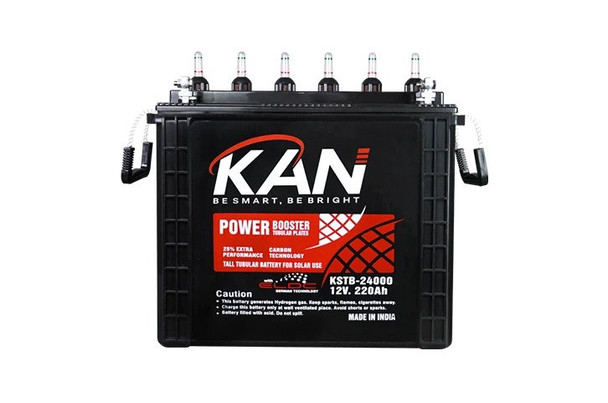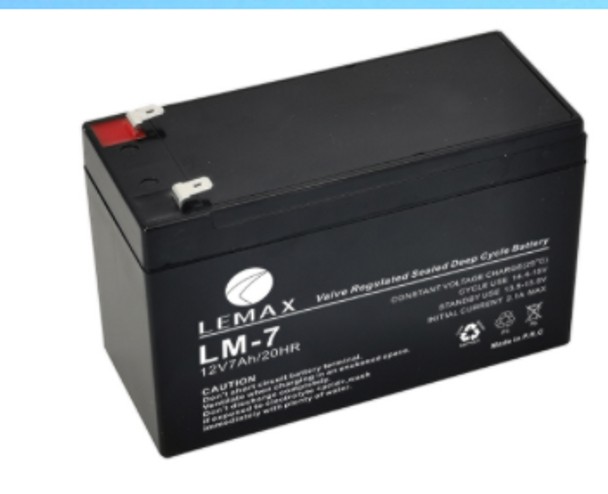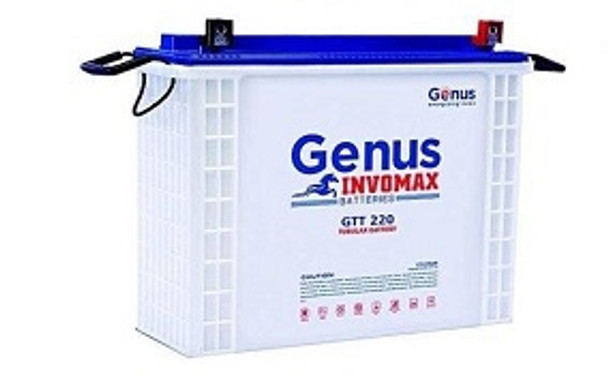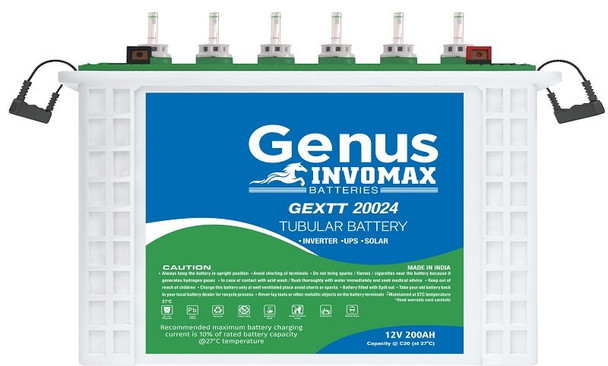How To Store Inverter Battery When Not In Use
Key takeaway:
One effective way to store your inverter battery is to ensure it is topped up with water to the max level mark and be fully charged before disconnecting it from the inverter. Clean the terminals properly and apply petroleum jelly on the terminals to prevent corrosion from exposure. Now store the battery in a cool (preferably zone temperature should not exceed 30 / 35 deg C) and dry place. Try to give a refresher charge & check electrolyte level every 3 months. You can reuse the battery after storage. Read on to learn more.
Introduction
Inverter Batteries and other energy storage devices store energy so that it can be used when needed. In a stand-alone power system, the energy stored in batteries can be used when energy demand exceeds the output from renewable energy sources like solar and wind energy. Inverter battery is a type of battery designed to better handle the power requirements of a power backup supply system. It is different from a normal car battery. Although a car battery can be used with an inverter it is not ideal.
Battery is the backbone of an inverter system. The performance and life of an inverter largely depend upon the battery quality. The next question is “how much back up will an inverter provide?” or for “how many hours it can run all of your equipment?”. This is what is called the battery capacity. It is the battery capacity that decides the back up hours. It is expressed in Ah (Ampere Hours).
Inverters and other energy conversion devices turn energy from one form to another. An inverter in a grid connected renewable energy system converts direct current (DC) electricity from solar panels or a wind turbine into alternating current (AC) mains power.
The following information will be useful in storing of inverter batteries
Buy Online Kan 12v. 220AH Solar Tubular Battery
You must observe the following steps in proper storage of inverter battery;
1. Charge the battery 100%.
2. Then drain all the electrolyte out of the battery(rinse with the help of water another time). The objective of doing this step is to keep the battery chemical-reaction free during storage. Note: You cannot do this yourself. Get a battery electrician and get this done by paying 100–200 bucks.
3. Once the battery is free of any liquid inside it you could store it for as long as you want.
4. After 3 years, get a battery servicemen and tell them to fill the battery with 1230–1250 = gravity electrolyte. Charge it and start using it again.
5. If the battery is a “sealed type” that you cannot open or drain, then the best bet is to charge the battery 100% before you move it to storage. While in storage, you will need to charge it to 100% every 5–6 months.
The above procedure needs a lot of effort and precautions. So If you own an inverter and you really want the batteries to last long for many years, just like your other appliances follow the above steps.
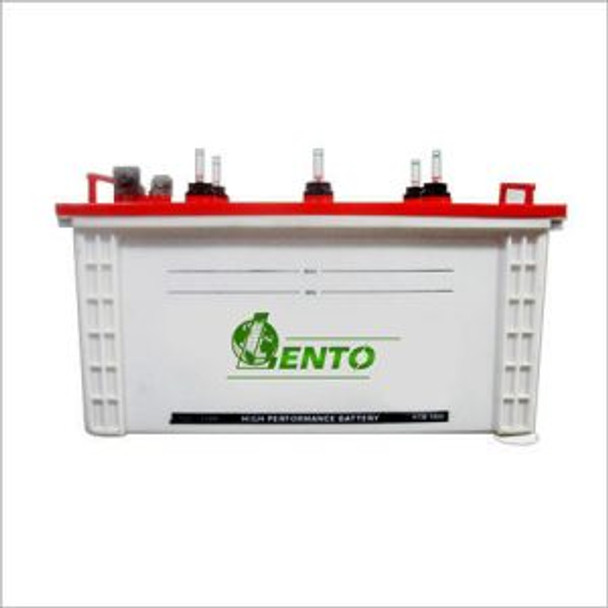
Buy Online Lento Tubular Battery 220ah 12v
Preparing the Battery for Storage
Before stowing away your inverter battery for an extended period, it's crucial to ensure it remains in optimal condition when you eventually need it. Follow these steps to prepare the battery for storage:
Cleaning and Maintenance:
Proper cleaning and maintenance play a pivotal role in preserving the longevity and efficiency of your inverter battery. Follow these steps:
- Exterior Cleaning:
- Start by cleaning the exterior of the battery with a mixture of mild detergent and water. Gently scrub the surface with a soft brush or cloth to remove any dirt or grime. Avoid using abrasive materials, as they may damage the battery casing.
- Terminal Inspection:
- Carefully inspect the battery terminals for any signs of corrosion. If you notice corrosion, mix a solution of baking soda and water and apply it to the terminals using a brush. After cleaning, ensure the terminals are completely dry before proceeding.
- Vent Caps:
- Check the vent caps on the battery, ensuring they are tightly sealed. If any caps are loose or damaged, replace them promptly to prevent dust or debris from entering the battery cells.
- Fluid Level Check:
- For lead-acid batteries, check the electrolyte fluid level. If it's low, add distilled water to bring it up to the recommended level. Be cautious not to overfill, as this can lead to acid leakage during storage.
- Battery Test:
- Before storage, conduct a battery capacity test using a multimeter or a battery tester. Ensure the battery is holding a charge within the optimal range. If the charge is low, consider recharging the battery before storage.
Inverter Battery 12V7AH VRLA Battery 12V7AH Lemax
Checking Battery Charge Level:
The charge level of your inverter battery is a critical factor in its ability to hold power over time. Follow these steps:
- Charging the Battery:
- If the battery charge is below the recommended level for storage (usually around 50%), recharge it using a suitable charger. Avoid overcharging, as it can lead to damage. Use a charger with a maintenance or float mode to keep the battery at an optimal level during storage.
- Monitoring Charge Status:
- After charging, use a voltmeter to check the battery voltage. A fully charged battery typically reads around 12.6 volts. Regularly monitor the voltage during storage and recharge if it drops below the recommended level.
- Disconnecting from Inverter:
- Before storing, disconnect the battery from the inverter to prevent any residual drain. This ensures the battery retains its charge over an extended period.
By following these steps, you set the stage for a well-maintained and adequately charged inverter battery during storage, ensuring it's ready to serve you when needed.
Choosing the Storage Location
The location where you store your inverter battery can have a significant impact on its performance and longevity. Therefore, you should choose a storage location that meets the following criteria:
- Ideal storage conditions: The ideal storage conditions for an inverter battery are cool, dry, and well-ventilated. Avoid storing your battery in places that are exposed to extreme temperatures, humidity, or sunlight. These factors can cause your battery to lose charge faster, degrade its components, or even explode. You should also avoid storing your battery near sources of heat, sparks, or flames, such as furnaces, stoves, or generators. These can pose a fire hazard or damage your battery.
- Factors to consider: When choosing a storage location for your inverter battery, you should also consider the following factors:
- Accessibility: Store your battery in a place that is easy to access and monitor. As you may need to check your battery periodically to ensure it is in good condition and charge it if needed. You should also be able to remove your battery quickly and safely in case of an emergency or a power outage.
- Security: Prioritize security when selecting a storage location. Ensure you store your battery in a place that is secure and protected from theft, vandalism, or tampering. Also keep your battery away from children, pets, or other unauthorized persons who may accidentally or intentionally damage or misuse your battery.
- Isolation from Electronics: Store the battery away from electronic devices or appliances. Electromagnetic fields generated by these devices can interfere with the chemical processes inside the battery, potentially leading to malfunctions or reduced performance.
- Protection from Physical Damage: Choose a location where the battery is protected from physical damage. Ensure it's placed on a stable surface and secure it to prevent accidental knocks or falls. Physical damage can compromise the integrity of the battery casing and affect its performance.
Tubular Battery 220AH/12V Invomax Genus
Storing the Inverter Battery
Once you have prepared your battery and chosen a suitable storage location, you can proceed to store your inverter battery. Here are some steps you should follow to store your battery safely and effectively:
Disconnecting the Battery:
- Before disconnecting the battery, ensure that the inverter is turned off. This prevents any electrical activity that might occur during the disconnection process.
- After that, carefully disconnect the battery cables, starting with the negative (-) terminal followed by the positive (+) terminal. Use the appropriate tools, such as a wrench or pliers, and be cautious to avoid any short circuits. Secure the disconnected cables away from the battery terminals to prevent accidental reconnection.
- Consider labeling the cables during disconnection. This helps in easy reconnection when you decide to use the battery again. Clearly mark the positive and negative terminals to eliminate any confusion.
- After disconnecting the cables, insulate the battery terminals to prevent accidental contact. Use electrical tape or terminal covers to cover the exposed metal. This step is crucial to avoid short circuits and ensure safety during storage.
Ensuring proper ventilation:
You should ensure that your battery is well-ventilated and has enough air flow around it. This will help to dissipate any heat that may be generated by your battery and prevent any overheating or explosion. Achieve this by:
- Positioning the battery in a well-ventilated storage area to allow the dissipation of any gases produced during the self-discharge process.
- Never store the battery in a sealed container, as it may lead to the build-up of gases and pressure inside the container.
- Store the battery in an upright position to prevent electrolyte leakage. Placing the battery on its side or upside down can cause the electrolyte to leak and compromise the internal components.
- Finally, ensure that the vent caps on the battery are properly sealed. These caps allow the release of gases and should not be obstructed.
Long-term Storage Tips
If you plan to store your inverter battery for a long period of time, such as months or years, you should follow some additional tips to ensure your battery remains in optimal condition and ready for use when needed. Here are some long-term storage tips for your inverter battery:
- Conduct periodic visual inspections of the battery throughout the storage period. Look for any signs of corrosion, leakage, or physical damage. Regular checks help identify potential issues early on.
- Even in storage, dust and debris can accumulate on the battery. Regularly clean the exterior using a soft cloth or brush to prevent any foreign materials from affecting the battery's performance.
- If the battery voltage drops significantly during storage, consider recharging it to the recommended level. This prevents self-discharge and ensures the battery retains sufficient charge for future use.
- For lead-acid batteries, check the electrolyte levels periodically. If the levels are low, add distilled water to bring them up to the recommended height. This helps maintain the chemical balance within the battery.
- Regularly measure the battery voltage using a voltmeter. If the voltage drops consistently below the recommended level, consider recharging the battery to prevent sulfation, a common issue in lead-acid batteries during long-term storage.
- If possible, maintain a stable storage temperature. Extreme temperatures, whether hot or cold, can adversely affect the battery. Consider using temperature-controlled storage solutions if the battery needs to be stored for an extended period.
- Invest in battery monitoring devices that provide real-time information on the battery's condition. These devices can track voltage, temperature, and other crucial parameters, offering insights into the overall health of the battery during storage.
- Maintain a record of the battery's condition and any maintenance activities performed during storage. This log can help you track the battery's health over time and make informed decisions about its future use.
Inverter Battery 200AH/12V Invomax Genus
Frequently Asked Questions
Here are some common questions and answers about storing inverter batteries:
Q: How long can I store my inverter battery?
- A: The storage duration of your inverter battery depends on several factors, such as the battery type, quality, age, condition, charge level, and storage environment. Generally, a well-maintained and fully charged inverter battery can be stored for up to a year without significant loss of capacity or performance. However, you should check your battery regularly and charge it periodically to prevent sulfation and deep discharge.
Q: What is the best temperature for storing my inverter battery?
- A: The best temperature for storing your inverter battery is between 10°C and 25°C. You should avoid storing your battery in places that are too hot or too cold, as this can affect your battery’s chemistry and lifespan. Extreme temperatures can cause your battery to lose charge faster, degrade its components, or even explode. You should also avoid exposing your battery to direct sunlight or moisture, as this can cause corrosion or fire.
Q: Can I store my inverter battery on the floor?
- A: No, you should not store your inverter battery on the floor, especially if the floor is made of concrete, metal, or wood. These materials can conduct electricity and cause your battery to discharge or short circuit. You should store your battery on a raised platform, such as a wooden pallet, a plastic crate, or a rubber mat. This will prevent any contact with the ground and protect your battery from dirt, dust, or water.
Related Article
Tips To Maintain Your Inverter Battery
Off-Grid Applications: Selecting the Right Inverter Battery Solutions
Difference Between UPS and Inverter
To get more information on How to Store Inverter Battery When Not In Use or to purchase best inverter and battery, contact GZ Industrial Supplies today.
If you are in the market to make a choice on the brand to buy read our article on the best inverter battery in Nigeria 2021 reviews


